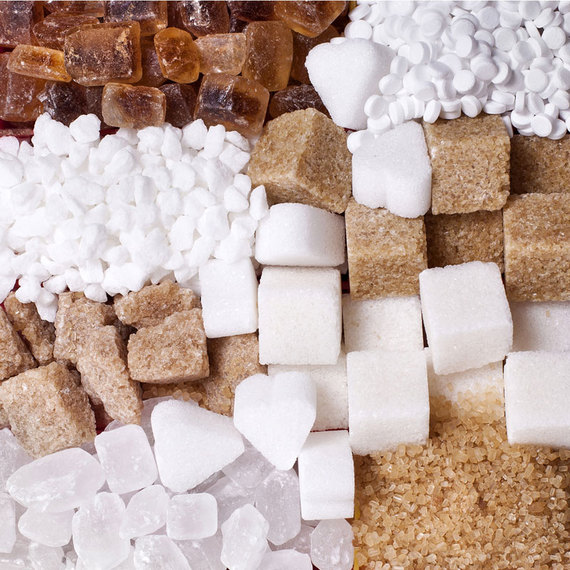At Little Global Chefs, we are all about packing as much nutrition as possible in every little bite you and your family eat. But that doesn't mean that we are all carrots and tofu all the time! We try to keep things balanced yet also realistic. Our kids (and us moms, too!) crave the occasional sweet treat -- oh, hello there, gorgeous brownie!! But how much is too much?
We needed to get the skinny on sugar before our next dentist check up so we turned to our favorite Pediatric Nutritionist, Nicole Silber to get the 411 on sweets and sugar. She's a registered dietitian and board certified specialist in pediatric nutrition so needless to say, she's our go to PRO when we're wondering why our kids are bouncing off the walls after inhaling that bag of cotton candy.
Here, Nicole shares with us her approach when it comes to sugar, sweets and treats. So before you promise your little one ice cream after school, read this!
___________
Sweetness is addicting. The more sugar you have, the more sugar you crave. I'm talking from both professional and personal experience - speaking of which, I could really use some chocolate right now.
Sugar comes in many forms: natural sugar found in foods like fruit, sugar alcohols (xylitol, mannitol) added into many "sugar-free" foods, cane sugar, high fructose corn syrup, dextrose, molasses... and the list goes on! These sweeteners are not all created equal, and they are processed slightly differently in our bodies. But, at the end of the day they are still sugar. When too much sugar is consumed, blood sugar levels rise too high. High blood sugar levels lead to an over secretion of the sugar balancing hormone, insulin, which can lead to a sugar crash that ultimately makes you crave even more sugar. If this cycle is on chronic repeat, it can lead to some unwanted health outcomes.
My approach to sugar is this - regardless of the source of sweetness, sweet foods and treats should not be over-consumed. When choosing sweet products or recipes to make, do select ones with better sweeteners (my favorites: maple syrup, honey, agave), but recognize that these foods are still treats. If you start going down the well it's better than white sugar path, it can become easy to justify stocking your pantry with sub-par products and having your family eat too much sugar.
Your little ones can't discern, nor do they probably care, which products are more natural and better for them; their taste buds are just thinking "I like this, and I want more." The goal is to get your kids to form palettes that are not heavily biased towards sweet regardless of the source, and to crave those savory flavors found in vegetables, legumes and protein.
Think of all sweets, regardless of the type of sweetener used, as treats. I recommend aiming for 2-3 treats per week on average. If a sweet dessert is a nightly tradition in your house, start by picking one night per week that is treat free. You can empower your children by letting them choose which nights will be treat nights. As you cut back, there will likely be some protest. Remember that as parents you are helping to form your kids' food habits. It is unlikely that a child who is used to having ice cream every night will suddenly stop wanting dessert on his own volition. That is why there is nothing wrong with getting your children used to eating fewer sweets from an early age.
And to quickly touch upon what I like to call "under treating." A house completely devoid of treats and dessert does not teach a child how to regulate their sweet cravings, and can lead to overeating outside of the house. That is why the 2-3 treats per week is a sound goal.
A quick run-down of the options:
Maple syrup honey, molasses and agave - these are fairly concentrated in sweetness, so the main advantage is that you do not need as much of these syrups to achieve the same sweetness as you would if you were using sugar granules. Plus, some these saps have some minerals like iron. There is talk that agave does not raise blood sugar levels as high or rapidly, but the jury is still out.
Coconut sugar - although touted as a healthier alternative because of its lower glycemic index (a ranking of food's effect on blood sugar levels), it really hasn't been proven to be the case.
Cane sugar, brown sugar and white sugar - these are your traditional sugars. While cane sugar is a bit less refined than white sugar and has a few minerals, our bodies do not process it very differently from brown and white sugar.
Sugar alcohols (xylitol, mannitol) and stevia - these sugar alcohols and substitutes are very sweet. They are not fully absorbed in our bodies, so they are much lower in calories than sugar. They may be good options for blood sugar control in diabetics and for dental health, but they can cause some tummy trouble and can intensify sweet cravings.
High fructose corn syrup and dextrose - these corn-based sweeteners are far from natural, and are overused in our food supply. There are some studies that have shown that high fructose corn syrup isn't actually any worse than the more natural sugars, but you can guess who funded these studies.
Nicole Silber, RD, CSP, CLC is a registered dietitian, board certified specialist in pediatric nutrition and a certified lactation counselor. Nicole has worked with hundreds of children and families with chronic medical conditions, food allergies, picky eating, oral-motor and processing disorders, infant nutrition, breastfeeding, gastrointestinal conditions, prematurity, underweight and obesity. Currently she works in private practice in New York City and also serves as Pediatric Nutrition Expert for Beech-Nut baby foods. Prior to her current roles she was a clinical nutritionist at the Morgan Stanley Children's Hospital at NewYork-Presbyterian/Columbia.
Photo Credit: Shutterstock
